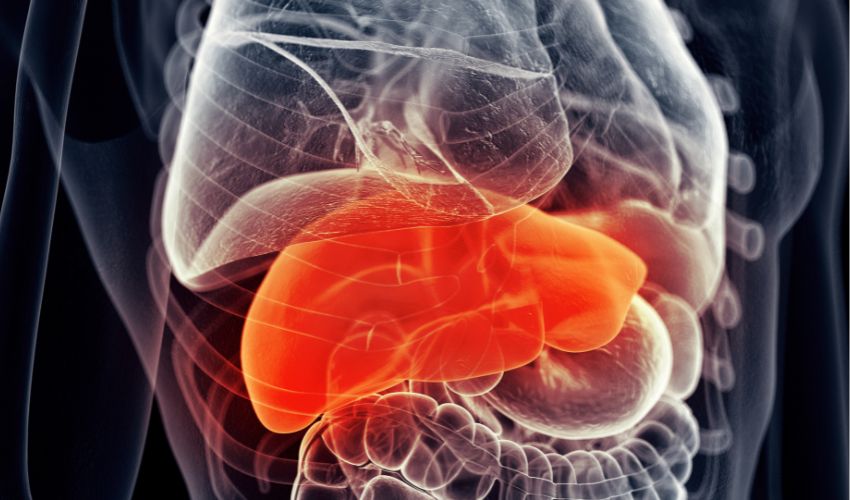Cirrhosis is a serious condition that affects the liver. It is a progressive disease that causes damage to the liver, leading to scarring and permanent liver damage. In this article, we will discuss the symptoms, causes, and treatment options for cirrhosis.
Cirrhosis is a chronic and progressive disease that affects the liver. It occurs when healthy liver tissue is replaced by scar tissue, which makes it difficult for the liver to function properly. Cirrhosis is a serious condition that can lead to liver failure, which can be fatal.
Causes of Cirrhosis:
There are many different causes of cirrhosis. The most common cause is chronic alcohol abuse, which can lead to alcoholic liver disease. Other causes include chronic viral hepatitis, non-alcoholic fatty liver disease, autoimmune hepatitis, and genetic disorders.
Symptoms of Cirrhosis:
The symptoms of cirrhosis can vary depending on the severity of the disease. Early symptoms may include fatigue, weakness, and weight loss. As the disease progresses, more severe symptoms can develop, such as jaundice, abdominal pain and swelling, and easy bruising or bleeding.
Complications of Cirrhosis:
Cirrhosis can lead to a number of complications, such as ascites, hepatic encephalopathy, and portal hypertension. Ascites is a buildup of fluid in the abdomen, while hepatic encephalopathy is a condition that affects brain function. Portal hypertension occurs when there is increased pressure in the veins that carry blood to the liver.
Diagnosis of Cirrhosis:
Diagnosing cirrhosis typically involves a combination of blood tests, imaging tests, and a liver biopsy. Blood tests can help to identify liver damage, while imaging tests such as an ultrasound or CT scan can provide a detailed view of the liver. A liver biopsy involves taking a small sample of liver tissue for examination under a microscope.

Treatment Options for Cirrhosis:
There are several treatment options for cirrhosis, depending on the underlying cause of the disease and the severity of the symptoms. Lifestyle changes such as quitting alcohol and adopting a healthy diet and exercise routine can help to manage symptoms and slow the progression of the disease. Medications may also be prescribed to treat the underlying cause of the cirrhosis or to manage symptoms such as ascites or hepatic encephalopathy. In severe cases, a liver transplant may be necessary.
Bullet Points:
- Cirrhosis is a condition that damages the liver and causes scarring.
- Common causes of cirrhosis include chronic alcohol consumption, viral hepatitis, non-alcoholic fatty liver disease, autoimmune hepatitis, and genetic disorders.
- Symptoms of cirrhosis include fatigue, jaundice, abdominal pain and swelling, and easy bruising or bleeding.
- Complications of cirrhosis can include ascites, hepatic encephalopathy, and portal hypertension.
- Diagnosis of cirrhosis may involve blood tests, imaging tests, and a liver biopsy.
- Treatment options for cirrhosis may include lifestyle changes, medications, and in severe cases, a liver transplant.
FAQs:
What are the primary causes of cirrhosis?
The primary causes of cirrhosis include chronic alcohol consumption and chronic viral hepatitis.
What are the symptoms of cirrhosis?
Symptoms of cirrhosis can include fatigue, jaundice, abdominal pain and swelling, and easy bruising or bleeding.

How is cirrhosis diagnosed?
Cirrhosis may be diagnosed through blood tests, imaging tests, and a liver biopsy.
What are the complications of cirrhosis?
Complications of cirrhosis can include ascites, hepatic encephalopathy, and portal hypertension.
What are the treatment options for cirrhosis?
Treatment options for cirrhosis may include lifestyle changes, medications, and in severe cases, a liver transplant.
Conclusion:
Cirrhosis is a serious condition that can have severe consequences if left untreated. If you or someone you know is experiencing symptoms of cirrhosis, it is important to seek medical attention promptly. With proper diagnosis and treatment, it is possible to manage the symptoms of cirrhosis and prevent further damage to the liver.






















